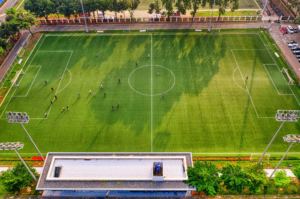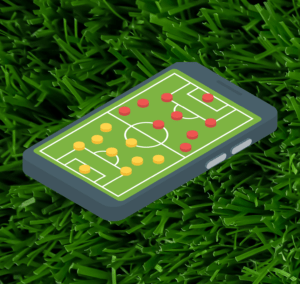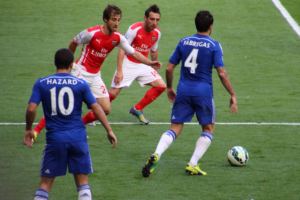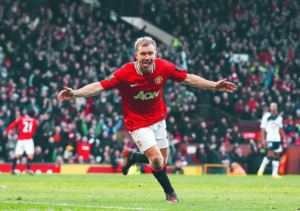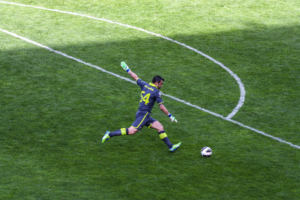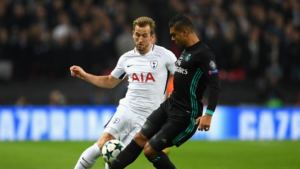One of the basic roles in football is the defender. The defender’s main job is to defend the goal. Some defenders play a more attacking role, especially on the outside (the 2 full-backs on the left and the right). However, their main priority is defending their own goal. Any other roles assigned to the defenders depend completely on the tactical instructions. Defenders try to stop the opposition from scoring first and help the attack and build-up play second.
Center Back
One important role in football is the center-back. Center-backs sit at the heart of the defense. Their main priority is defending the goal. However, center-backs need to adapt to different instructions from different team setups. Despite common practices to play bigger players in the center-back role, center-backs can be of any size. And because they can be of any size, they can defend the goal in their own way.
Communication is Key
Additionally, to be successful center-backs must communicate with their defensive partners. They must be in constant coordination with the full-backs and goalkeeper to maintain a solid defensive line. A good defensive line moves together and can catch opposition players offsides. In addition, the center-backs control how high up the field the defensive line is. The further up the field the defensive line, the smaller the space the opposition has to maneuver.
Stopper
The stopper is a center-back who steps up his line to put pressure on the ball. When an opposing player breaks through the midfield, the stopper is the first player expected to step. Also, the stopper may have the responsibility of challenging aerial balls that land in between the midfield and defensive lines, as well as sometimes employed to win aerial challenges during goal kicks.
This role is usually paired with a sweeper to provide cover for the gap left by the stopper when he steps up.
Sweeper/Cover
The sweeper is a center-back who stays on the last line of defense. The sweeper controls the team’s defensive shape in offside traps. Depending on aerial ability, the sweeper may be used to tightly mark the opposition’s forward or biggest aerial threat in crosses or set pieces.
In a sweeper/stopper tactical setup, the sweeper has to cover the gap left by the stopper when the stopper applies pressure on the ball. A defensive midfielder or libero can also fill in the gap to help the sweeper.
Flat Center Back
The flat center back is a mix of a stopper and sweeper. In a flat defense, the center-backs are responsible for both roles. A good manager assigns good match-ups in marking man-to-man or employs a zonal marking. In zonal marking, each center-back is responsible for his “half” of the field split at the center of the goal. For example, a center-back in a flat 4-defender set up that plays on the left will be responsible for all threats coming from the left side of the field.
Libero
The modern Libero is something between a center-back and a defensive/holding midfielder. The libero is employed as either a part of the defense or as part of the midfield line. When playing as part of the defense, Liberos are usually used in 5 defender or 3 center-back formations.
Liberos at the Back
When a libero plays as a center-back, he or she is given the responsibility of building up the play from the back in addition to their defensive duties. The libero is given the freedom to push up with the attack slightly more than a center-back would and usually finds himself in the hole between midfield and the defense. Good liberos drop back into the defensive line to collect the ball and pass it on to the midfield. This version of the libero is very limiting as his positioning defaults to the center-back position. As we will see later on, the defensive midfield role has variations on this role.
Full-Back
Full backs operate on the left and right sides of the defense. Full backs are versatile and can play very attacking roles at times. Some of the greatest full-backs of the game were known for their quick feet and deadly crosses. However, make no mistake, full-backs are defenders first. Their main priority is defending, with a secondary role of supporting their wing partner or the midfield.
Success in Pace
To be successful, modern full-backs need to be physical, quick, explosive and have the vision to know when to push up the field to support the attack. The full-back does not get the most mileage on the pitch, however, they usually make the most sprints. Involved in both the attack and defense, full-backs must go up and down the field with the momentum of the game. On attack, they are expected to support the winger, sometimes even overlapping them. Also, on defense, they are expected to return to their defensive line to mark the opposing winger.
Full-backs are a general term for the outside backs, however, there are a variety of roles that a full-back can play.
Traditional Full Back
The traditional full-back is a defender-first mentality. So, the full-back is required to fulfill his defensive duties first, and push up the field to support the winger second. By moving forward down the line with the attack at key moments, full-backs provide support for the forward players by providing an outlet and possibly overlapping to whip in a cross.
The wing-back is a player that sits between the midfield and defensive lines on the outsides. Because he/she is usually without support in the wings, the wing-backs must provide width on the attack, and mark the opposition wide threat on defense. The wing-back can even provide extra pressure on the opposition’s wide players to win possession of the ball quickly.
Also, because wing-backs do the job of two positions at once, they are suited to a 3 center-back set up to provide cover when the wing-backs push up. Or, with a defensive midfielder to cover the gap.
Underlapping Wing Back
The underlapping wing-back is very similar to the regular wing-back with one key difference. On attack, the underlapping wing back pushes up the field into the defensive midfield position to provide extra outlets in the midfield. This is opposed to regular wing-backs who are expected to overlap and get as wide as possible.

